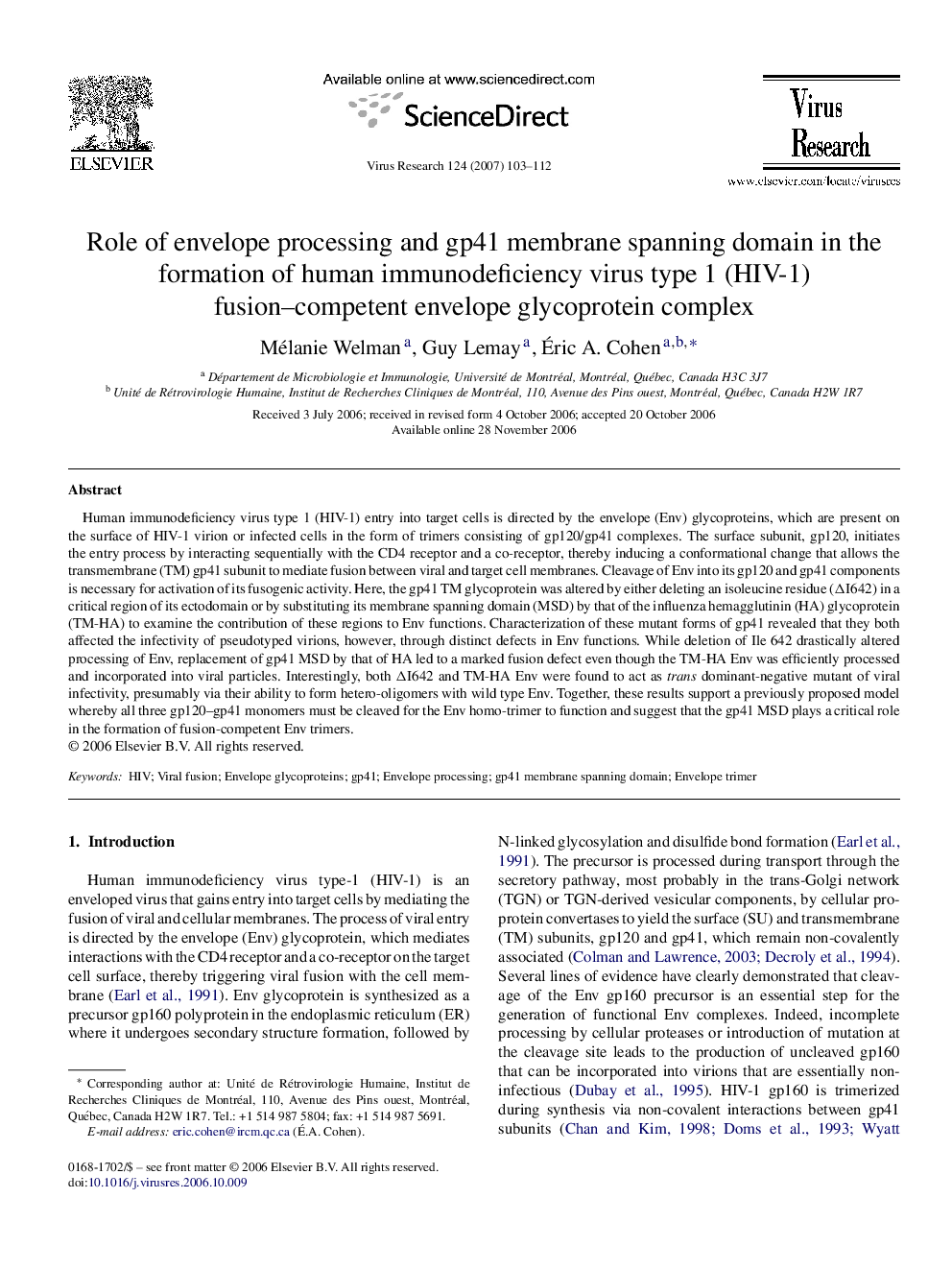| Article ID | Journal | Published Year | Pages | File Type |
|---|---|---|---|---|
| 3430980 | Virus Research | 2007 | 10 Pages |
Human immunodeficiency virus type 1 (HIV-1) entry into target cells is directed by the envelope (Env) glycoproteins, which are present on the surface of HIV-1 virion or infected cells in the form of trimers consisting of gp120/gp41 complexes. The surface subunit, gp120, initiates the entry process by interacting sequentially with the CD4 receptor and a co-receptor, thereby inducing a conformational change that allows the transmembrane (TM) gp41 subunit to mediate fusion between viral and target cell membranes. Cleavage of Env into its gp120 and gp41 components is necessary for activation of its fusogenic activity. Here, the gp41 TM glycoprotein was altered by either deleting an isoleucine residue (ΔI642) in a critical region of its ectodomain or by substituting its membrane spanning domain (MSD) by that of the influenza hemagglutinin (HA) glycoprotein (TM-HA) to examine the contribution of these regions to Env functions. Characterization of these mutant forms of gp41 revealed that they both affected the infectivity of pseudotyped virions, however, through distinct defects in Env functions. While deletion of Ile 642 drastically altered processing of Env, replacement of gp41 MSD by that of HA led to a marked fusion defect even though the TM-HA Env was efficiently processed and incorporated into viral particles. Interestingly, both ΔI642 and TM-HA Env were found to act as trans dominant-negative mutant of viral infectivity, presumably via their ability to form hetero-oligomers with wild type Env. Together, these results support a previously proposed model whereby all three gp120–gp41 monomers must be cleaved for the Env homo-trimer to function and suggest that the gp41 MSD plays a critical role in the formation of fusion-competent Env trimers.
